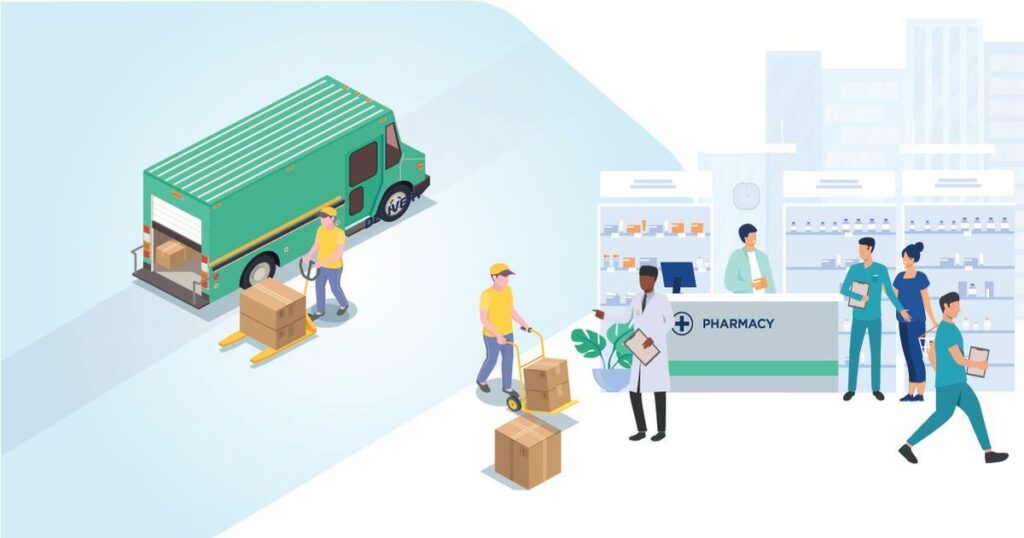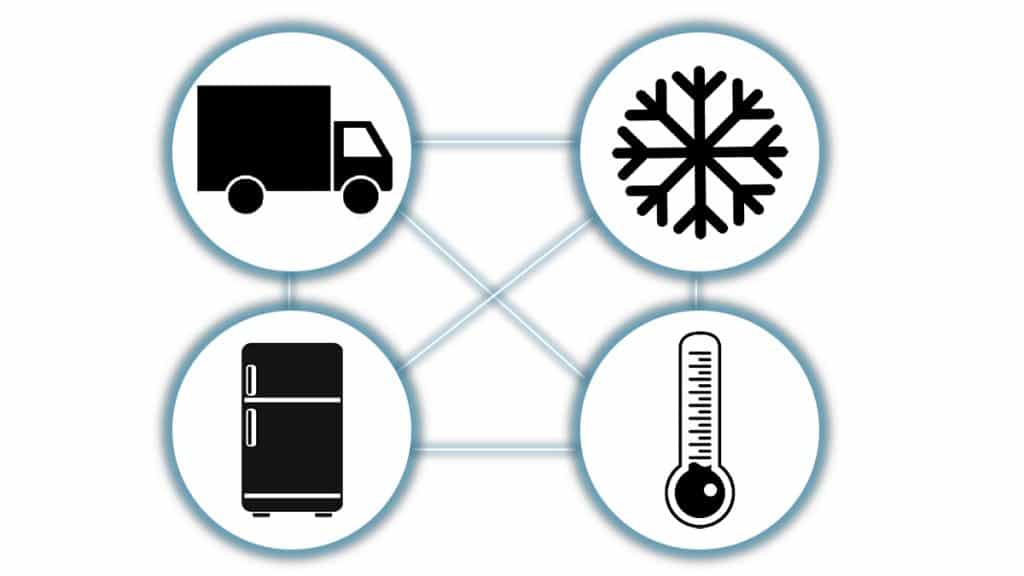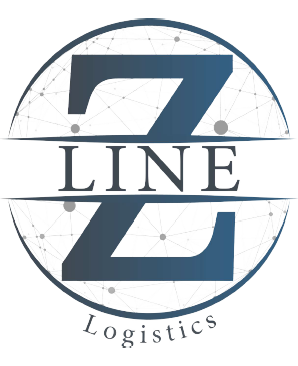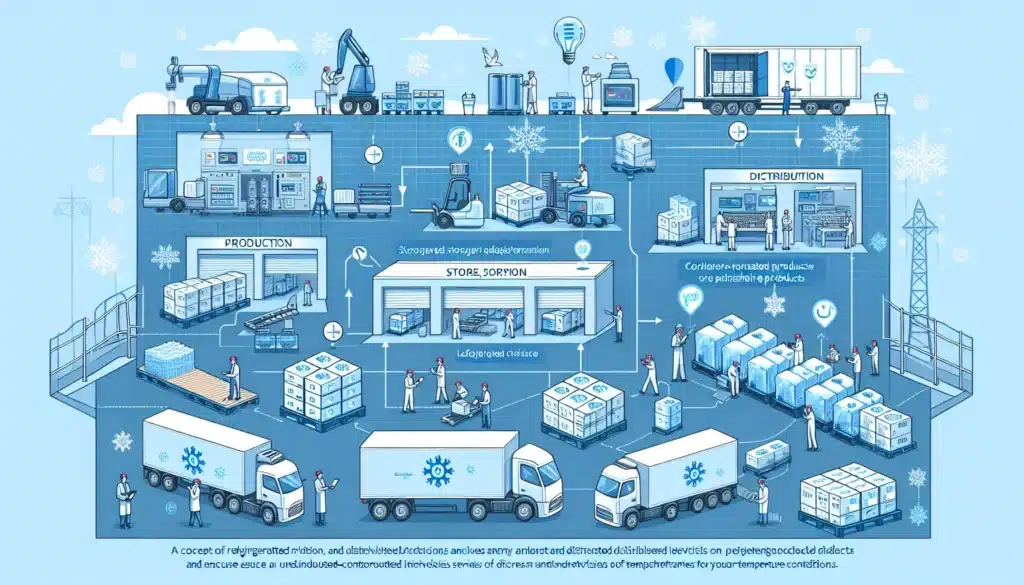Have you ever wondered how your fresh produce makes it from the farm to your grocery store, or how life-saving vaccines reach remote communities? The answer lies in a complex system called cold chain management.
This isn’t just about keeping things chilled; it’s a complex network of controlled temperatures that ensures the safety, quality, and efficacy of temperature-sensitive products.
Think of it like this: imagine trying to build a sandcastle on a windy beach. Without the right tools and careful planning, your masterpiece will crumble.
Cold chain management provides that crucial care, acting as the invisible shield that protects these products from spoilage, degradation, and even loss of potency.
In this post, we’ll dive deeper into the world of cold chain management, and explore its key principles, challenges, and the vital role it plays in our daily lives in 2025.
Table of Contents
What is the meaning of cold chain management?
Cold chain management is a critical component of modern supply chains, impacting various sectors and contributing significantly to global economies.
Efficient cold chain practices not only ensure the quality and safety of perishable goods but also minimize waste, reduce economic losses, and improve public health.
By preventing spoilage and contamination, cold chain management helps to conserve resources and reduce the environmental impact of food production and distribution.
As global trade continues to expand and consumer demand for fresh and high-quality products grows, the importance of robust and reliable cold chain management systems will only continue to increase.

Read more: What is the Meaning of Stocktaking? The 4 Differences Between Stocktaking and Stock Checking
What are the principles of cold chain management?
The core principles of cold chain management revolve around maintaining the integrity of temperature-sensitive products throughout their journey. Here are some key principles:
- Temperature Control: Maintaining the product within its specific temperature range as in the cold chain protocol (e.g., frozen, refrigerated, ambient) is important to prevent spoilage, degradation, and loss of potency.
- Continuous Monitoring: Constant temperature monitoring is essential. This involves using sensors, data loggers, and other technologies to track product temperatures in real-time.
- Proper Packaging: Utilizing appropriate packaging materials like insulated containers, ice packs, and dry ice is crucial to maintain the desired temperature during transportation and storage.
- Controlled Transportation: Employing refrigerated vehicles, containers, and aircraft to ensure that the product’s temperature remains within the specified range during transit.
- Efficient Handling: Minimizing handling and ensuring gentle movement of products to prevent damage and temperature fluctuations.
- Documentation and Record-Keeping: Maintaining accurate records of all temperature data, handling procedures, and any deviations from the cold chain. This documentation is essential for quality control, regulatory compliance, and traceability.
- Risk Assessment and Mitigation: Identifying potential risks throughout the supply chain and implementing measures to mitigate them. This may include contingency plans for unforeseen events like equipment failures or transportation delays.
- Employee Training: Ensuring that all personnel involved in the cold chain are properly trained on handling, storage, and transportation procedures.
Learn more: The Positive and Negative Impacts of the Amazon Effect on Freight in Dubai
What is the objective of cold chain management?
The primary objective of cold chain management is to maintain the quality, safety, and efficacy of temperature-sensitive products throughout their entire journey.
This involves:
- Preserving product integrity: Preventing spoilage, contamination, and degradation of the product’s physical and chemical properties.
- Ensuring safety: Minimizing the risk of foodborne illnesses and ensuring the safety and efficacy of pharmaceuticals and other medical products.
- Reducing waste: Minimizing product loss due to spoilage, damage, or degradation, which has significant economic and environmental implications.
- Meeting regulatory requirements: Complying with relevant food safety and pharmaceutical regulations related to temperature control and product integrity.
- Improving customer satisfaction: Delivering products to the end-user in the best possible condition, meeting expectations for freshness, quality, and potency.

For more information: Mass vs Tailored Logistics – Which is Better in 2024?
What are the Best Practices in Cold Chain Management?
1. Robust Temperature Monitoring & Control
- Real-time Tracking: Utilize sensors and data loggers to continuously monitor product temperatures throughout the entire journey.
- Temperature Alarms: Implement alerts for temperature excursions to enable prompt corrective action.
- Data Analysis: Analyze temperature data to identify trends, potential issues, and areas for improvement.
2. Optimized Packaging
- Insulation: Cold chain services have to choose high-quality insulated packaging materials (e.g., expanded polystyrene, vacuum insulation panels) to minimize temperature fluctuations.
- Cold Packs/Dry Ice: Utilize appropriate cold packs or dry ice to maintain the desired temperature range.
- Packaging Design: Consider packaging design that maximizes insulation and minimizes the impact of external temperature variations.
3. Efficient Transportation
- Refrigerated Vehicles: Employ refrigerated trucks, containers, and aircraft with reliable temperature control systems.
- Route Optimization: Plan routes to minimize transit times and exposure to extreme temperatures.
- Pre-cooling/Pre-heating: Ensure vehicles and containers are pre-cooled or pre-heated before loading to maintain the desired temperature quickly.
4. Proper Handling & Storage
- Minimize Handling: Reduce the number of times products are handled to minimize the risk of temperature fluctuations and damage.
- Controlled Storage: Maintain appropriate temperature and humidity levels in warehouses and storage facilities.
- Proper Loading/Unloading: Ensure proper loading and unloading techniques to prevent damage and temperature excursions.
5. Employee Training & Awareness
- Cold Chain Training: Train all personnel involved in the cold chain (e.g., drivers, warehouse workers, handlers) on proper handling, storage, and temperature control procedures.
- SOPs: Develop and implement Standard Operating Procedures (SOPs) for all cold chain activities.
- Regular Audits: Conduct regular audits to ensure compliance with SOPs and identify areas for improvement.
Read more: A Deep Dive into Low-Cost Country Sourcing with 6 Easy Tips
In Conclusion
Cold chain management may seem like a behind-the-scenes process, but its impact is undeniable.
From the fresh fruits and vegetables we enjoy to the life-saving medications that keep us healthy, cold chain ensures that these essential goods reach us in the best possible condition.
Cold chain management is constantly improving as technology advances. New ways of transporting and monitoring products keep them safe during their journey
By understanding the principles of cold chain management, we can appreciate the intricate network that keeps our world running smoothly and supports a healthier future for all.
Let Z Line Logistics help you build a robust and efficient cold chain. Contact us today for a free consultation.




